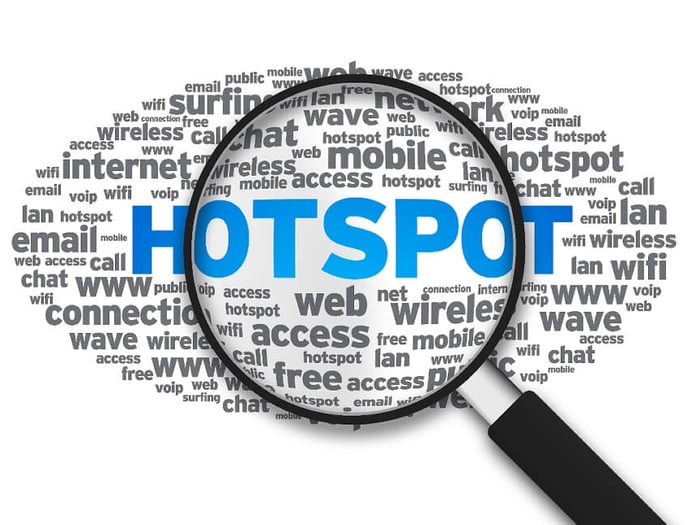How Much Network Traffic Can A Wi-Fi Network Handle?
When moving towards an enterprise wireless network, one of the obvious questions to ask is "How many access points will we need? or How much traffic can my WiFi handle?" This is one of the key factors that determines whether your new Wi-Fi network will be a success - it's essential your location have sufficient access points, and sufficient coverage, to ensure everyone has proper access.
many access points will we need? or How much traffic can my WiFi handle?" This is one of the key factors that determines whether your new Wi-Fi network will be a success - it's essential your location have sufficient access points, and sufficient coverage, to ensure everyone has proper access.
As with most things involved in networking, there isn't a single easy answer. WiFi access points come with a range of capacities, and there are also several options for antennas, depending how the network is to be used.
So, we've put together a few helpful hints for determining your WiFi needs. Read on for a better idea of what sort of options you have!
Creating A Wi-Fi Network That Can Handle Your Traffic
1 - Have a heatmap made.
In networking, a heatmap is a professionally-designed overview of your facilities along with your workforce's usage. The purpose is to identify which parts of your property will have the highest density of usage, identifying where the most access points will be needed, as well as which areas need less coverage.
By having a networking expert evaluate your site ahead of time, you'll go into your wireless purchase armed with most of the information needed to set up your access points efficiently.
2 - Ignore advertised user loads.
Manufacturers of WiFi routers tend to vastly overestimate the number of people who can viably connect to a given access point. The software in the router might say it can handle 100 users, but in practical reality, only around 30-40 will be able to connect and still see useable bandwidth rates. Those maximums are really only theoretical.
Generally, WiFi routers will have either one, two, or three radios inside them. Each radio theoretically allows around 100 users, but as a rule of thumb, assume the real number is about one-third of what's advertised.
Also, keep in mind that off-the-shelf routers designed for home use are not suitable for business use unless your office only has a handful of people. A given home Linksys router, for example, will struggle to even maintain ten connections.
3 - Consider each user's individual demands.
Are your users going to be using bandwidth-heavy applications, or just be doing lightweight browsing and email? Their usage will determine your access point density.
For example, a school would generally have one access point per classroom, meaning one for every 30-40 people. On the other hand, if your office does a lot of online work with large file transfers or streaming materials, you'll want higher-powered access points with one for every 20-30 people.
Again, having a heatmap made before hand will vastly reduce the ambiguity here, allowing you to pin down exactly what sort of usage loads you're looking at.
4 - Antennas Determine The Affected Area
There are six different antenna types you can choose from, and each affects the direction and the distance of the WiFi network broadcast. The most common is the omni-directional antenna, which provides a spherical bubble around the router. These are the most common inside buildings.
However, there are also options for directional antennas, which can aim your WiFi away from public areas or bridge multiple locations through tight-band broadcasts. For outdoor deployments, there are grid-based antennas that work almost like cell towers to create blanket coverage over a large area.
For more information on antenna types specifically, check out our antennas blog article.
Expert Advice Makes WiFi Networking Easy
If you're unsure about your own location's needs or how much bandwidth your users will expect, don't hesitate to ask for advice. It's difficult for newcomers to accurately gauge their WiFi needs, and a consultation beforehand can often save a lot of money in the long run.
To get more advice, or to set up a heatmap consultation, just let us know what you need!




